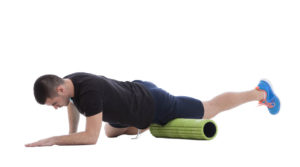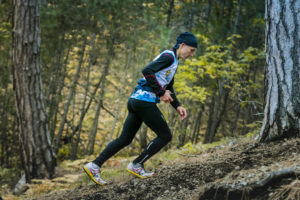When I started to work with Roddy knee pain was robbing him of the enjoyment he got from his morning run.
A 2:30 marathon runner, he really felt he wasn’t running freely.
The pain wasn’t crippling him but it was always there.
Some days it was barely noticeable but on others, it was like toothache nagging away at him.
But always worse after a longer run.
He couldn’t comfortably get into certain positions in his yoga classes.
Especially those that required a deep flexed knee position..there he got a sharp pain.
And even the child pose was really uncomfortable.
He was one of the classic “uninjured” injured athletes I see regularly.
You can still train and play but you don’t feel like you used to.
The years haven’t been kind and accumulated niggles are having an impact.
Movement is a bit restricted.
Nothing seems to flow the way it used to.
In part due to tissue adaptations but mostly down to the behaviors you’ve learned to allow you to keep on trucking.
Great on the one hand…it allows you to keep training but, eventually, a real handbrake in terms of performance.
There often isn’t a need for big changes or to take a complete break.
It’s much more about finding the gaps in your training and filling them…
Checking how you move and work on any glaring restrictions…
And helping you solve the problems yourself.
Roddy, like many, had lost the ability to balance on one leg.
As soon as he got into that position he felt like he’d fall over.
Yet being comfortable here is essential to pain-free running.
It’s your mid-stance position.
If you are unable to get there you’ll load your leg very unevenly.
What you start to see are three compensations when you are running.
- The knee flexes too much when your foot hits the ground
- The knee extends too fast.
- A lateral drop of the pelvis on the support leg
These aren’t just limited to runners…
Pretty much anyone with knee pain will demonstrate them.
The reason for this?
A lack of posterior knee stability.
You need the calf and hamstring working as a team to prevent the early knee extension.
This in turn places you in a position where the whole leg is working better.
You don’t get excessive knee flexion.
The glutes then have time to do their job and the lateral tilt disappears.
And like I had planned it that is where Roddy is now.
Not just running without any pain but running faster.
Yet his training isn’t geared towards running faster… he’s all about enjoying his running having left his competitive days behind him.
But here’s the kicker…
He’s running around 30 seconds per km faster with no extra effort.
How’s he doing this?
Because he’s got two legs again.
For the last few years, he’s pretty much been running on 1 leg.
His injured leg barely contributed to pushing him forward.
He says it’s most noticeable on hills where he feels a lot more powerful and doesn’t slow down anything like as much.
If your knee pain has been impacting your ability to train…
If sitting for long periods means throbbing pain around your knee…
Or your knees are starting to go snap, crackle, and pop when you stand up.
I’ve put together my top 3 knee pain exercises here for you to get started.
My Top 3 Knee Pain Exercises
https://www.dropbox.com/s/rty0xzwkpb9rbxb/Top%203%20Knee%20Pain%20Exercises.pdf?dl=0



